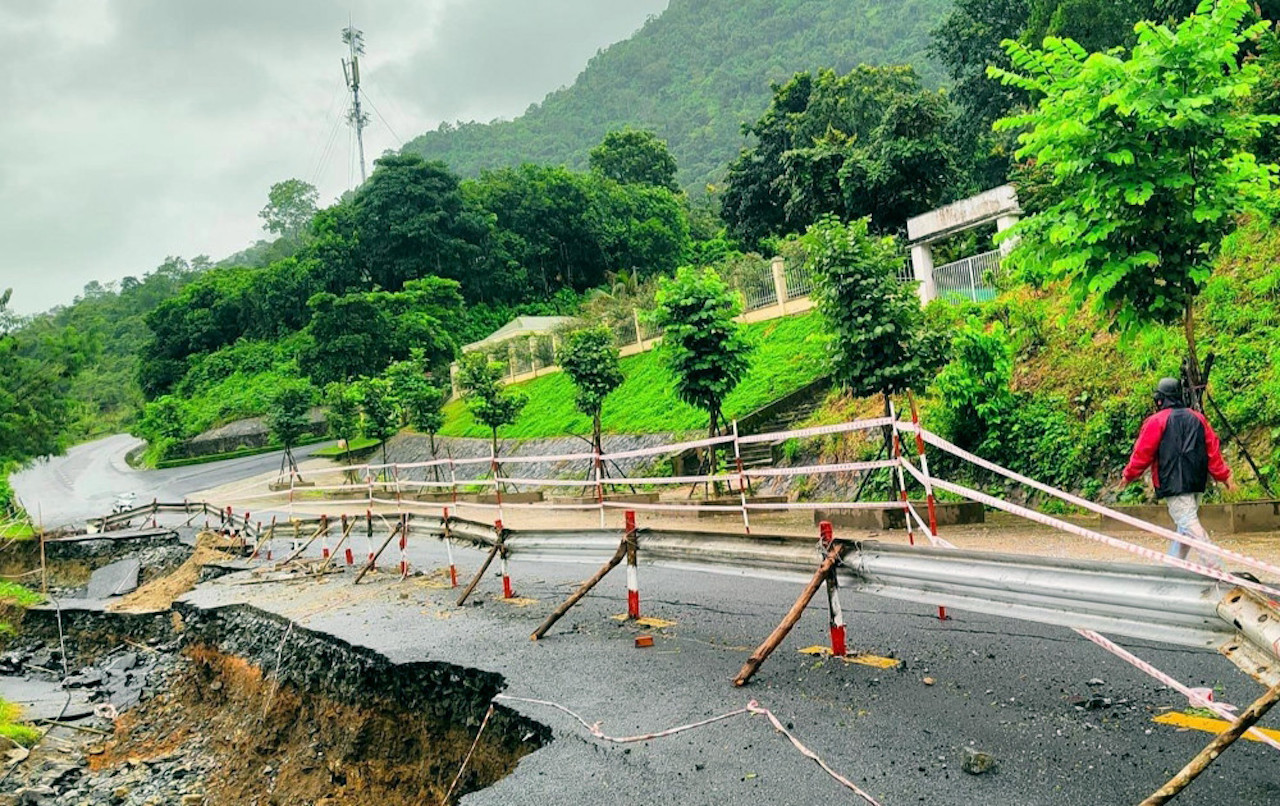Yagi, the strongest typhoon to hit Vietnam's mainland in 70 years, affected 26 provinces and cities in the North and Thanh Hoa.
Ranking as the third most destructive typhoon in terms of human casualties over the past 30 years, Yagi trails only behind Typhoon Linda (1997) and Typhoon Frankie (1996).

As of September 21, the Ministry of Planning and Investment has estimated the economic damage caused by the typhoon at 61 trillion VND - equivalent to 65% of the total investment for the Ring Road 4 project passing through Hanoi, Bac Ninh, and Hung Yen.
The typhoon not only resulted in significant loss of life but also devastated the transportation infrastructure. Landslides and rockfalls buried 4,177 locations, rendering many roads inoperable, over 700 ports and ferry terminals unsafe, leading to the cancellation of dozens of train services.
The head of Vietnam Road Administration reported that Typhoon No. 3 caused severe damage at 4,177 road sites, with 3,924 affected by landslides, subsidence, road breaks, and damaged bridges and culverts, and 253 locations flooded.
Significantly, in Phu Tho, the Phong Chau bridge collapsed at two spans. Additionally, due to heavy rains and rising water levels, four other bridges on national routes had to cease operations.
There were 820 traffic blockages, including 567 caused by landslides and damaged bridges, and 253 due to flooding.
Initial estimates by the agency put the damage at about 2 trillion VND. This includes over 500 billion VND for immediate traffic management costs such as clearing debris, road repairs, temporary road and bridge construction, and replacing road signs to restore traffic on the affected national roads.
The estimated cost for rebuilding the national roads to safety standards, excluding the reconstruction of Phong Chau Bridge, is about 1.5 trillion VND.
Mr. Tran Thien Canh, the head of Vietnam Railway Administration, indicated that initial assessments show over 30 locations where landslides have covered railway tracks, and more than 40 places were flooded or washed away. Hundreds of trees fell onto railway lines and communication cables, damaging numerous signal equipment due to water exposure. A total of 76 train services were canceled, resulting in an estimated loss of 28 billion VND.
"The estimated cost for recovery is over 130 billion VND," Mr. Canh added.
Race to reopen roads and restore connections
Throughout the typhoon, the Ministry of Transport issued numerous directives and maintained a 24/7 emergency response under the "four on-the-spot" motto.
A representative from the Ministry stated that before, during, and after the typhoon, the department continuously directed management and maintenance units to mobilize resources, materials, and personnel to ensure road safety and quickly address the damages caused by the storm and flooding.
Particularly for roads critical for rescue operations or connecting isolated communities, the objective was to clear and reopen them as quickly as possible.
Road Management Bureau I, which oversees most national routes in the affected northern provinces, experienced the full brunt of Typhoon Yagi's destruction. In Lang Nu (Bao Yen, Lao Cai), the village was washed away, and all access roads suffered landslides and blockages, hindering rescue efforts.
Reflecting on the most challenging days, a representative from Road Management Bureau I reported that the director personally visited the site at night to mobilize all available resources for immediate clearance.
"Working through the night, in darkness and ongoing rain, while still facing the risk of further landslides, we managed to temporarily clear one lane by 11 PM. At the same time, rescue and medical teams from Lao Cai reached Pho Rang and accessed the landslide site overnight," the representative shared.
According to Road Management Bureau I, all national routes are now fully operational. However, the repair and restoration of the transportation infrastructure will require more time and funding. The Ministry of Transport estimates that 3 trillion VND is needed for repairs and restoration.
In response to the disaster, the Ministry of Transport has requested additional funding from the central budget reserve to carry out necessary repairs and restore the infrastructure.
They also urged local governments to support road management agencies in securing areas for disposing of landslide debris and facilitating land clearance for major repairs to ensure safety.
N. Huyen